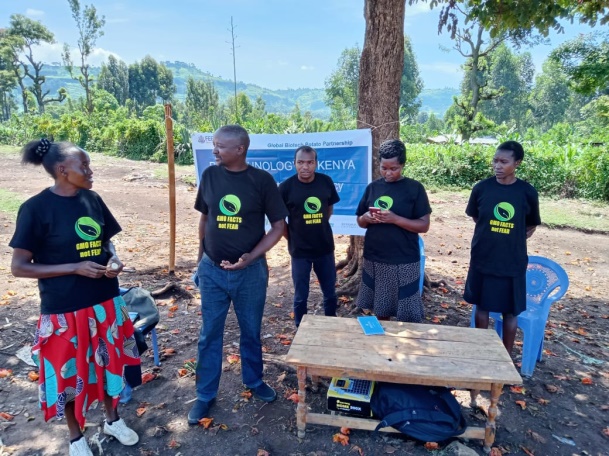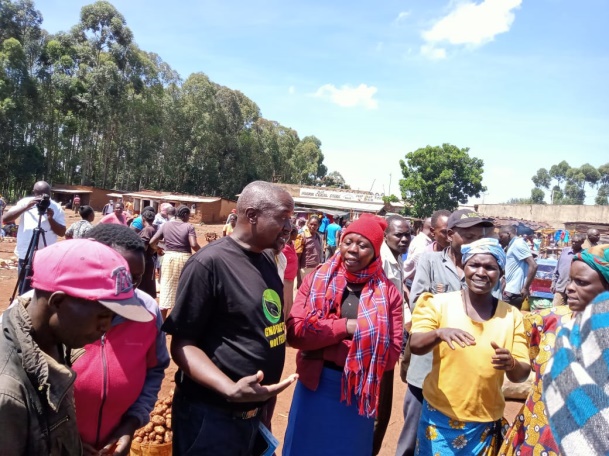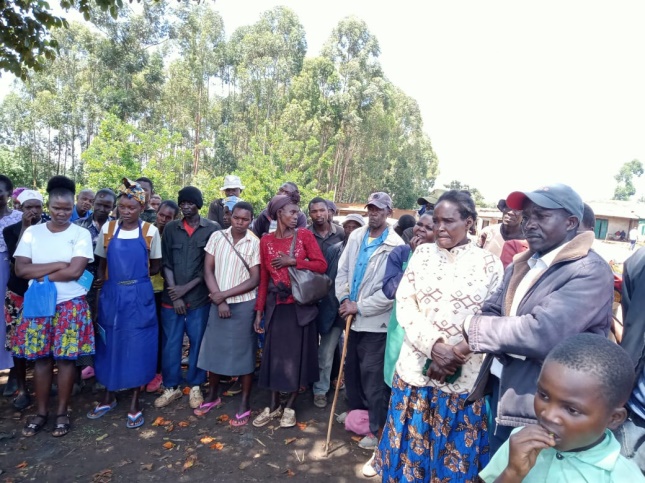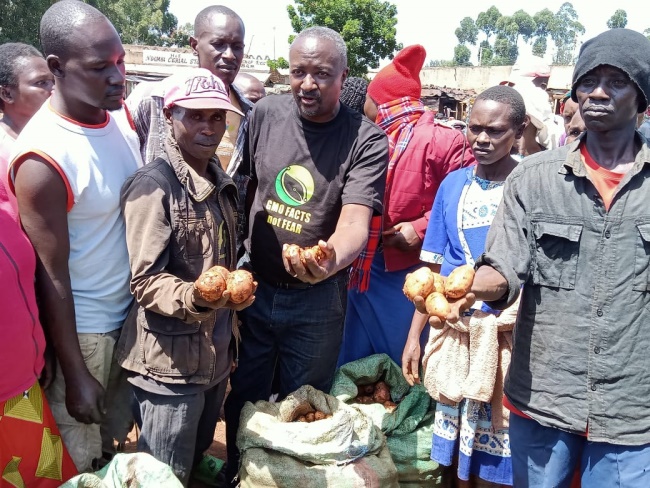In Kenya, when a potato meant for the market leaves the farm, it lands in the hands of potato middlemen who are also referred to as brokers. The mention of the middlemen and brokers elicits mixed emotions in potato farmers who take them as a “necessary evil”.
Without involving these brokers who pick produce at the farm gate, and also dwell at market centers to offload and sell to traders, the life of potato farmers is not complete. On May22nd, 2024 The “GMO FACTS not FEAR” team held a training session for six community trainers who were sent to their communities to run a three-day farmer sensitization exercise.
The following day we visited potato traders at Kapkateny shopping center in Bungoma County. This market at the foot of Mt. Elgon serves farmers, traders, and brokers with lots of experience in the potato business.




Top left: the trainers from the Mt. Elgon area. Top Right; Images of potato farmers, traders, and middlemen/brokers at the Kapkateny shopping center in Bungoma County. Bottom left: Members of the public, traders, and middlemen attending the late blight-resistant potato sensitization session at the market.
During the meeting which attracted members of the press from leading media houses including West FM Radio and TV, Magharibi TV, and Nation media (seeds of Gold magazine), potato traders were educated on the advantages of the late blight-resistant potato over the conventional varieties planted by farmers.
The traders welcomed the late blight resistant potato and hoped that the National Biosafety Authority could expedite its approval for them to plant on their farms and reap maximum benefits.
Other factors that attracted them to the yet-to-be-released GMO potato included cutting costs of spraying due to the ability to withstand “barafu or kuungua,” which loosely translates to late blight disease.
Other farmers present challenged my team to ensure there was enough seed to go round all the fields since the GMO potato seemed to be the long-awaited solution to dwindling potato stocks. Generally, some farmers didn’t believe the news that the late blight-resistant potato would reduce the number of times they spray their crop.
This seemed too good to believe though they insisted on seeing it happen when we provide them with seed. Just like other potato-growing regions of Kenya where farmers had lost hope due to changing weather patterns, both farmers and traders present confirmed that the region is set to experience a shift back to growing potatoes as their main cash crop and reap maximum benefits from the late blight resistant potato.
